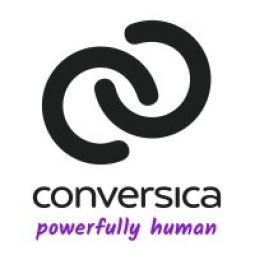技术
- 基础设施即服务 (IaaS) - 虚拟私有云
- 可穿戴设备 - 虚拟现实(VR)眼镜/耳机/控制器
适用行业
- 汽车
- 医疗保健和医院
适用功能
- 销售与市场营销
用例
- 对话机器人
- 智能包装
服务
- 测试与认证
关于客户
IHS Markit 是一家领先的信息服务公司,估值达 50 亿美元。该公司在金融服务、汽车和能源等多个主要市场开展业务,在全球拥有约 16,000 名员工和 150 个办事处。 IHS Markit 致力于利用其产品和服务帮助客户做出更好、更明智的决策。该公司以其数据的质量和 600 名分析师组成的团队而自豪,他们共同努力综合信息并指导客户获得最佳结果。 IHS Markit 的工作经常引起媒体关注,引起人们对其信息服务的极大兴趣,并推动其网站的自然流量。
挑战
IHS Markit 是一家价值 50 亿美元的信息服务公司,在管理因广泛的营销活动和媒体曝光而产生的大量咨询方面面临着重大挑战。该公司在金融服务、汽车和能源等关键市场开展业务,难以识别和提升适合其理想客户资料或准备进行销售参与的潜在客户。挑战不仅在于询问量,还在于销售团队跟进潜在线索的能力。该公司需要一种解决方案来帮助他们在不增加员工人数的情况下管理如此高的销售量,同时提高客户保留率和扩张能力。
解决方案
IHS Markit 采用 Conversica 的智能虚拟助理 (IVA) 来管理大量询问并识别可销售的潜在客户。 IVA 是由人工智能驱动、基于 SaaS 的软件应用程序,充当虚拟团队成员,并自主地与联系人进行类似人类的大规模双向交互。他们超越了传统的潜在客户评分,直接询问联系人的兴趣,直接从潜在客户那里提供当前的兴趣以及当前和最佳的联系信息以及他们期望的联系时间。 IHS Markit 使用其对话式营销人工智能助理来吸引新的潜在客户,而其对话式客户成功人工智能助理可促进客户健康,并通过追加销售和交叉销售机会帮助扩大当前关系。该公司还在考虑雇用额外的 IVA,以协助通过大规模礼貌和个性化的沟通来收款。
运营影响
数量效益

Case Study missing?
Start adding your own!
Register with your work email and create a new case study profile for your business.
相关案例.

Case Study
Integral Plant Maintenance
Mercedes-Benz and his partner GAZ chose Siemens to be its maintenance partner at a new engine plant in Yaroslavl, Russia. The new plant offers a capacity to manufacture diesel engines for the Russian market, for locally produced Sprinter Classic. In addition to engines for the local market, the Yaroslavl plant will also produce spare parts. Mercedes-Benz Russia and his partner needed a service partner in order to ensure the operation of these lines in a maintenance partnership arrangement. The challenges included coordinating the entire maintenance management operation, in particular inspections, corrective and predictive maintenance activities, and the optimizing spare parts management. Siemens developed a customized maintenance solution that includes all electronic and mechanical maintenance activities (Integral Plant Maintenance).

Case Study
Hospital Inventory Management
The hospital supply chain team is responsible for ensuring that the right medical supplies are readily available to clinicians when and where needed, and to do so in the most efficient manner possible. However, many of the systems and processes in use at the cancer center for supply chain management were not best suited to support these goals. Barcoding technology, a commonly used method for inventory management of medical supplies, is labor intensive, time consuming, does not provide real-time visibility into inventory levels and can be prone to error. Consequently, the lack of accurate and real-time visibility into inventory levels across multiple supply rooms in multiple hospital facilities creates additional inefficiency in the system causing over-ordering, hoarding, and wasted supplies. Other sources of waste and cost were also identified as candidates for improvement. Existing systems and processes did not provide adequate security for high-cost inventory within the hospital, which was another driver of cost. A lack of visibility into expiration dates for supplies resulted in supplies being wasted due to past expiry dates. Storage of supplies was also a key consideration given the location of the cancer center’s facilities in a dense urban setting, where space is always at a premium. In order to address the challenges outlined above, the hospital sought a solution that would provide real-time inventory information with high levels of accuracy, reduce the level of manual effort required and enable data driven decision making to ensure that the right supplies were readily available to clinicians in the right location at the right time.











